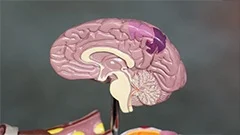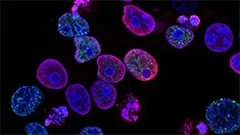Introduction
Neurotransmitters are specialized chemicals that transmit signals across a chemical synapse from one neuron to another or between a neuron and muscle or gland cell. The metabolism of these crucial molecules is an essential aspect of understanding the functioning of the nervous system, as well as its various disorders. This course will delve into the intricate biochemical processes surrounding neurotransmitter synthesis, transport, storage, release, reuptake, and degradation.
Historical Background
The concept of neurotransmission emerged in the late 19th century with the discovery of acetylcholine by Thomas Ely and Henry Hallett Dale. Since then, extensive research has elucidated the roles of other prominent neurotransmitters such as dopamine, serotonin, glutamate, GABA, and norepinephrine.
Scope of the Course
This course will provide a comprehensive overview of the metabolism of major neurotransmitters, focusing on their biosynthetic pathways, catabolic mechanisms, transporter proteins involved in neurotransmission, and the implications of dysregulation of these processes in various neurological disorders.
Learning Objectives
By the end of this course, students should be able to:
- Describe the biosynthetic pathways of key neurotransmitters
- Explain the mechanisms responsible for neurotransmitter release, reuptake, and degradation
- Discuss the roles of transporter proteins in these processes
- Understand the clinical relevance of disruptions in neurotransmitter metabolism
- Synthesize the knowledge gained to formulate hypotheses and predict the potential effects of pharmacological interventions on neurotransmission
Biosynthesis of Neurotransmitters
The biosynthetic pathways for major neurotransmitters are outlined below:
Acetylcholine (ACh)
- Synthesis from choline and acetyl-CoA via the enzyme choline acetyltransferase (ChAT).
- Packaging into synaptic vesicles for release upon neuronal depolarization.
- Hydrolysis by acetylcholinesterase (AChE) to restore homeostasis after transmission.
Catecholamines: Dopamine, Norepinephrine, and Epinephrine
- Synthesis from tyrosine via the enzyme tyrosine hydroxylase (TH).
- Conversion to dopamine by the enzyme aromatic amino acid decarboxylase (AADC).
- Further conversion to norepinephrine and epinephrine through dopamine β-hydroxylase (DBH) and phenylethanolamine N-methyltransferase (PNMT), respectively.
- Storage in synaptic vesicles for release upon neuronal depolarization.
Serotonin (5-HT)
- Synthesis from tryptophan via the enzyme tryptophan hydroxylase (TPH).
- Conversion to serotonin by the enzyme aromatic amino acid decarboxylase (AADC).
- Storage in synaptic vesicles for release upon neuronal depolarization.
Glutamate and GABA
- Synthesis from glutamic acid or α-ketoglutarate via various enzymatic steps.
- Release into the synapse, where it can bind to ionotropic or metabotropic receptors on postsynaptic neurons.
- Reuptake by specific transporters for recycling or degradation.
Catabolism of Neurotransmitters
The catabolic pathways for major neurotransmitters are outlined below:
Acetylcholine (ACh)
- Hydrolysis by acetylcholinesterase (AChE) to choline and acetic acid.
- Choline can be recycled via the Kennedy pathway for reuse in ACh synthesis, or excreted via urine.
Catecholamines: Dopamine, Norepinephrine, and Epinephrine
- Oxidative deamination by monoamine oxidase (MAO) to form catechol and ammonia.
- Further conversion of catechol by catechol-O-methyltransferase (COMT) to form methoxycatechol or vanillymandelic acid (VMA).
- Excretion of metabolites via urine.
Serotonin (5-HT)
- Oxidative deamination by monoamine oxidase (MAO) to form 5-hydroxyindoleacetic acid (5-HIAA).
- Excretion of 5-HIAA via urine.
Glutamate and GABA
- Reuptake by specific transporters for recycling or degradation.
- Degradation through the tricarboxylic acid (TCA) cycle in the mitochondria.
Transporter Proteins in Neurotransmission
Transporter proteins play crucial roles in regulating the levels of neurotransmitters, ensuring proper signaling and preventing toxic accumulation:
Vesicular Transporters
- Packaging of neurotransmitters into synaptic vesicles for release upon neuronal depolarization.
- Involved in the reuptake of neurotransmitters following release.
Plasma Membrane Transporters
- Mediate the reuptake of neurotransmitters from the synapse back into the presynaptic neuron or adjacent glial cells.
- Facilitate the diffusion of neurotransmitters across the blood-brain barrier.
Clinical Implications of Neurotransmitter Metabolism Dysregulation
Dysregulations in neurotransmitter metabolism can lead to a variety of neurological disorders:
Parkinson's Disease
A decrease in dopamine levels due to degeneration of dopaminergic neurons.
Schizophrenia
Altered dopamine and glutamate neurotransmission, resulting in disrupted cognitive processes.
Depression and Anxiety Disorders
Imbalances in serotonin and norepinephrine levels, contributing to changes in mood regulation and behavior.
Conclusion
Understanding the metabolism of neurotransmitters is essential for grasping the intricacies of neuronal communication and its dysfunctions. The knowledge gained from this course will lay a strong foundation for further exploration of the nervous system and its disorders, ultimately paving the way for novel therapeutic strategies.
MCQ: Test your knowledge!
Do you think you know everything about this course? Don't fall into the traps, train with MCQs! eBiologie has hundreds of questions to help you master this subject.
These courses might interest you
Create a free account to receive courses, MCQs, and advice to succeed in your studies!
eBiologie offers several eBooks containing MCQ series (5 booklets available free for each subscriber).




